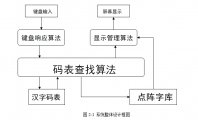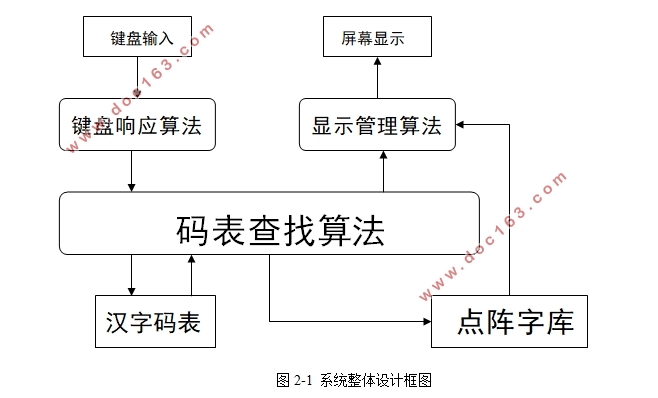在STM32上实现汉字拼音输入

在STM32上实现汉字拼音输入(任务书,开题报告,论文12000字)
摘 要
随着科学技术的进步,单片机的应用越来越普遍。本论文旨在对ARM的深入学习,首先介绍了开发环境KEIL,然后论文对STM32的LCD基本显示部分,触摸屏输入,以及汉字码表、字库的制作与调用进行了初步的探索与研究。通过几个月对STM32的学习,进一步了解了汉字拼音输入的原理,提高了自身对嵌入式系统软件的编程能力,其中包括输入键盘的制作,汉字的搜索函数,对触摸屏的位置坐标的分析,以及触摸屏LCD的相关驱动的修改,并且将这几个部分整合在一起。在几个人的团结合作下,最终基本完成了要求,还有一些输入界面的美化,以及选择到某一个汉字的功能有待进一步的研究。
关键词:STM32 拼音输入 汉字 驱动
The Chinese characters pinyin Input based on STM32
Abstract
With the improvement of science and technology, the application of ARM becomes more and more widely. This paper aims to further study of ARM, first of all, this paper introduces the development environment KEIL, afterwards, paper makes a preliminary exploration and research, which includes STM32 LCD display basic parts, touch screen input, and the table of Chinese characters, the production and call of word stock. Through the study of a few months to the STM32, I have a further comprehension of the principle of Chinese characters pinyin input, improved my programming ability of Embedded system software, including the design of keyboard, the function of searching Chinese characters, the analysis of the location coordinates on touch screen and the modification of driver related to LCD, and integrate all these parts together. After the cooperation of several people, we completed the project finally, there are some input interface beautifications and the function of choosing a Chinese character need further study.
[资料来源:http://www.doc163.com]
Key Words : STM32;Pinyin input;Chinese characters;drivers
[资料来源:http://Doc163.com]

目 录
摘 要 I
Abstract II
第一章 绪 论 1
1.1 设计背景和意义 1
1.2 STM32目前的发展情况 1
1.3 STM32的优异性 2
第二章 总体方案设计 3
2.1 任务与要求 3
2.1.1 任务 3
2.1.2 要求 3
2.2 方案论证 3
2.2.1 单片机的选型 3
2.2.2 显示屏的选型 3
2.2.3 存储功能的选择 3
2.3 系统总体设计 4
第三章 系统硬件概述 6
3.1 显示与触摸模块介绍 6
3.1.1 显示部分介绍 6
[资料来源:http://www.doc163.com]
3.1.2 触摸部分介绍 8
3.2 整体系统硬件设计 10
3.2.1 单片机系统设计 10
3.2.2 电源部分设计 10
3.2.3 单片机和PC机之间的通信 11
3.2.4 单片机和触摸屏接口设计 11
第四章 系统软件设计 13
4.1系统模块初始化 13
4.2 LCD显示模块设计 14
4.2.1 LCD显示设置总体分析 14
4.2.2 LCD显示驱动编写 14
4.2.3 LCD显示程序编写 19
4.3触摸屏输入模块设计 21
4.3.1 触摸屏驱动编写 21
4.3.2 触摸屏程序编写 26
4.4 汉字拼音输入模块设计 29
4.4.1 汉字码表的制作 29
4.4.2 汉字字库的制作 30
4.4.3 拼音输入法驱动代码编写 31
4.5 所有模块的综合设计 33
第五章 系统功能实现 36
5.1 汉字拼音调用实现 36
5.2 汉字选择功能实现 36
第六章 总结和展望 37
6.1 总结评价 37
6.2 展望 38
参考文献 39
致 谢 41
